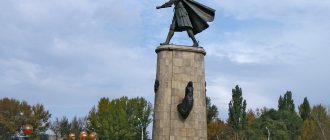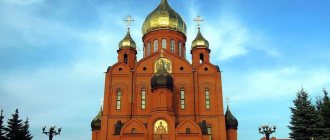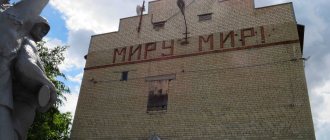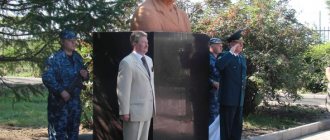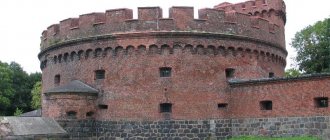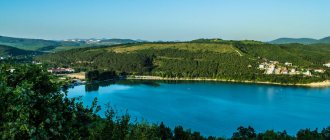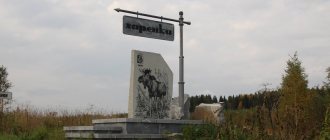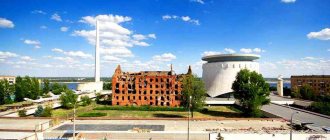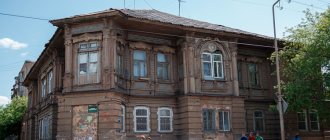The holiday begins with the opening of events by officials. On this day, folk art fairs are held. Art exhibitions welcome art lovers within the walls of museums. Public organizations, with the support of the authorities, organize races. Everyone is welcome. Theaters show performances in the open air. An entertainment program is being prepared for children.
Musical and creative groups perform performances. Competitions bring together those who want to compete for championship in sports. On this day it is customary to open constructed objects. In the evening, popular performers are invited to the stage. The date ends with colorful fireworks.
In 2022, Volzhsky City Day is celebrated on July 22. If a holiday falls on a weekday, the program of events usually extends until the end of the week.
City information
Volzhsky is a city in the Volgograd region. It is located in the southeast of the European part of the Russian Federation. Located on the left bank of the Akhtuba River. The economy is represented by enterprises of the chemical and food industries, metallurgy, and mechanical engineering. Energy generating companies are operating.
There is a cargo-passenger railway junction. There is a river port. There are universities and their branches, secondary specialized and vocational educational institutions. There are attractions related to history and culture. The population is more than 320 thousand people.
Train Station
Volzhsky station is a railway station of the Volgograd branch of the Volga Railway. The station is located at st. Kirova, 19a. The opening date of the railway station is August 1964, the number of platforms is 2, the operating mode is 24 hours a day.
Popular long-distance train routes: Astrakhan, Grozny, Moscow, Baku, Dushanbe, Tashkent, Kyiv, Khujand, Grozny, Kulyab. In the summer, trains pass through the railway station in the following directions: Orsk, Novokuznetsk.
History of Volzhsky
The history of Volzhsky begins in the 14th century. On the site of the modern city there were settlements of the Golden Horde. The territory was used by nomads, between whom conflicts regularly broke out. During the time of Catherine II, a silk factory was built here, which fell into disrepair a few decades later. Only small peasant farms remained. During the Second World War, this territory was quite destroyed.
The emergence of a settlement on the site of the village of Verkhnyaya Akhtuba was facilitated by the construction of the Stalingrad hydroelectric power station. In 1951, the construction of housing began with the help of prisoners. On July 22, 1954, the village of Volzhsky was transformed into a city by Decree of the Presidium of the Supreme Soviet of the RSFSR. After this, its rapid development began. Two administrative districts arose, which were abolished at the end of the USSR. As part of the Russian Federation, it experiences difficulties in the economy and infrastructure renewal.
The Volga Federal District ( VFD includes 15 constituent entities of the Russian Federation: the republics of Bashkortostan, Mari El, Mordovia, Tatarstan, Udmurtia, Chuvashia; Kirov, Nizhny Novgorod, Orenburg, Penza, Perm, Samara, Saratov, Ulyanovsk regions; Komi-Permyak Autonomous Okrug. The center of the district is the city of Nizhny Novgorod.
The Volga Federal District occupies 1038 thousand square meters. km.
The population of the region is 32,019 thousand people. The share of urban residents is 70.8%. The district contains five largest Russian cities with a population of more than 1 million: Nizhny Novgorod, Samara, Kazan, Ufa, Perm. Volga Federal District is one of the most multinational districts. It is home to Russians, Tatars, Bashkirs, Chuvashs, Udmurts, Mordovians, Maris, Komi-Permyaks - in total about 140 representatives of various nations, nationalities, and ethnic groups. 179 national and cultural autonomies are registered.
The region is rich in a variety of mineral resources. In addition to oil and gas reserves, which account for 13 and 2% of the total Russian reserves, respectively, unique reserves of potassium salts are concentrated here (about 96% of all explored resources of the country), large resources of phosphorites - 60%, zinc - 19%, copper - 16%, cement raw materials - 15%, silver - 14%, gold - 7%, mineral waters - 7%. The Volga Federal District has small deposits of nickel, chromium, lead, iron ores, titanium, alluvial diamonds, coal, as well as huge reserves of various raw materials for the production of building materials. Fuel resources are represented by oil, natural gas, oil shale, and peat.
The Volga Federal District is one of the leading in the country in terms of industrial development and one of the main agricultural regions of Russia, producing about 27% of agricultural products. A characteristic feature of the Volga region is a large proportion of enterprises of the military-industrial complex.
The most important industries in the region are the diversified, highly developed mechanical engineering and petrochemical complex. Mechanical engineering is represented in the district: transport - automotive, shipbuilding, aviation; precision and complex - instrument making, electrical engineering industry, electronic engineering, as well as machine tool building and tool industry, production of technological equipment for the petrochemical complex, tractor manufacturing and others.
There are 13 State Nature Reserves in the district:
Basegi, Reserve Bashkir Reserve Bolshaya Kokshaga Reserve Vishera Reserve Volga-Kama Reserve Zhigulevsky Kerzhensky Reserve Mordovian Reserve Nurgush Reserve Orenburg Reserve Volga forest-steppe Prisursky Reserve Shulgan-Tash Reserve
There are also 9 National Parks in the district: Bashkiria, Buzuluksky Bor National Park Mari Chodra National Park Nechkinsky National Nizhnyaya Kama National Park Samarskaya Luka National Smolny National Park Khvalynsky National Park Chavash Varmane National Park
There are also federal reserves in the district: Volga State Experimental Hunting Estate Zubovo-Polyansky State Experimental Hunting Estate Penza State Experimental Hunting Estate
***
Coat of arms
The coat of arms of Volzhsky is presented in the form of a French shield. It is divided into two parts. At the top there is an azure field with a golden eight-pointed star. In the middle there are horizontal wavy belts of variable colors. Below there is a green tree on a yellow background.
The coat of arms was adopted by Resolution of the Volga City Duma No. 85/23 dated March 26, 2003 (as amended by Regulation No. 74-VGD dated November 1, 2006). The artistic composition is included in the State Heraldic Register of the Russian Federation under No. 110.
What are federal districts
The Volga Federal District is an administrative unit of Russia, formed as a result of the reform of the country's territorial structure carried out in the early 2000s. During the transformation, 7 federal districts (FDs) were formed, and a new position appeared - the plenipotentiary representative of the head of state in each of these territorial entities. There is an opinion that this innovation was intended to ensure a higher quality of economic and political integration of Russian regions. The reform was preceded by a period of formation of a new model of federalism, different from the Soviet principles of administrative structure.
The state, according to some experts, could not decide whether to give the regions more freedom or centralize control in Moscow. As a result, a compromise option was developed: they decided to create additional management structures between the capital and the constituent entities of the federation. It turned out that the regions, on the one hand, were quite independent, on the other, they were obliged to respect the interests of neighboring federal subjects with whom they were in the same district.
Flag
The Volzhsky flag was approved on October 20, 2006. It is made in the form of a blue rectangular panel. The aspect ratio is 2:3. Below is a wavy stripe of yellow color measuring 1/16 of the width of the canvas. Above it, in the same proportion and color, is a horizontal wavy stripe. In the center is an eight-pointed gold star. The distance between the ends is 1/2 of the width of the flag. At 1/4 of the same size, the top beam does not reach the top edge.
Criticism of the federal district system
Among Russian experts, there are opinions about the imperfection of management of the territorial units into which Russia is administratively divided. The Volga Federal District is no exception. Such views were expressed especially often in the early 2000s, in the first years after the district systems were introduced by the president. One of the critics’ arguments is that this initiative of the head of state does not comply with the norms of the constitution. In particular, the main law of the country states that decisions on reforming the administrative-territorial system of the Russian Federation can only be made on the basis of federal laws, but not presidential decrees. Despite the fact that the districts were established precisely by decree of the head of state. Another point that critics pay attention to is the functions of the presidential representative in the federal districts. In the constitution, they believe, there is not a word about how the powers of the head of state can be transformed into the functions of the plenipotentiaries in question.
Hymn
Our sun rises high, Playing in the Orthodox domes. The city floats like a white swan, over the expanse of wormwood land. A page of miracles opened, And palaces and factories stood up. A mighty hydroelectric power station was rising on hands stronger than stone and steel.
Chorus: The flag flies proudly: two rivers wave, We live under a happy star. My homeland, I am proud of you, the Volga garden city has become my destiny!
We keep the names of veterans. Continuing the great work, So that the heart sings Glory to the city of Volga at all times. The eight-winged star is shining, leading to a new life. Volzhsky is in my heart forever - the Glorious city of the great Fatherland.
Words and music by E. Kryukov.
Approved on May 28, 2010.
Reform of the Ministry of Internal Affairs of federal districts
In May 2014, the President of Russia carried out a partial reform of the system of state authorities within the federal districts. This affected the structures of the Russian Ministry of Internal Affairs. In the federal districts there were the main directorates (GU) of the Ministry of Internal Affairs of the Russian Federation. The authorities decided to reduce these positions as a result of another government decision, which established the maximum number of employees of the Ministry of Internal Affairs, whose work is financed from the state budget - 1 million 113 thousand 172 people. As a result, the departments of the Ministry in the federal districts were subject to abolition (excluding the Main Directorate of the Ministry of Internal Affairs of the Russian Federation for the North Caucasus Federal District). The main departments of the Ministry of Internal Affairs for the Volga Federal District, as well as for similar structures in the Far East, Siberia, the Urals, the Center, the South and North-West of Russia were abolished. Employees of these departments were removed from the staff and had to undergo re-certification, based on the results of which the issue of their further work was decided.
Kirov
Kirov is a city with very high entrepreneurial activity. According to calculations by the Institute for Systematic Research of Entrepreneurship Problems, in 2012 the Kirov region became a leader in many indicators. In particular, the region took first place in the number of small businesses per 100 thousand people - about 220 units. The Kirov region took first place in the number of people working in small enterprises. The level of investment in the capital of small businesses per capita here is more than twice the Russian average (more only in the Penza region).
The city of Kirov is several hundred years old. The year of its foundation is 1181. Until 1457 it was known as Vyatka, until 1781 - as Khlynov. The city received its modern name in 1934. In Soviet times, Kirov was considered a semi-closed settlement due to the large number of defense industry enterprises located there. Now the city is open to guests from Russia and abroad.
Nizhny Novgorod
Nizhny Novgorod is the largest city in the Volga Federal District and one of the most famous in Russia. It was founded in 1221 by Prince Yuri Vsevolodovich. Its name, according to the first version, is associated with its lower location relative to Veliky Novgorod; according to the second, it is relative to another city with a similar name that was located higher along the Volga. During the period of the Mongol-Tatar yoke in Rus', Nizhny Novgorod was not very well known. But after the invaders were expelled from Russian soil, it began to actively develop, often noted in chronicles. Some historians believe that during the existence of the Nizhny Novgorod principality (in 1341-1392), the city could claim the status of the capital of Russia, since it was able to compete on equal terms with Moscow and Tver. In 1612, an army led by Minin and Pozharsky began to move from the walls of the Nizhny Novgorod Kremlin, which liberated our country from the Polish-Lithuanian invaders. In 1722, Emperor Peter the Great celebrated his fiftieth anniversary in Nizhny Novgorod. Russian geniuses Kulibin, Lobachevsky, Damascene, teacher Kuzhelev, historian Ilyinsky, traveler Baranshchikov lived here. The city was visited by A.S. Pushkin. He described his impressions of walks through the iconic places of Nizhny Novgorod in the chapters of “Eugene Onegin”. From the 30s until the collapse of the USSR, the city was named after the writer A. M. Gorky. Now Nizhny Novgorod is one of the industrial centers of Russia. The legendary historical and cultural heritage makes it popular among tourists and is a source of pride for Nizhny Novgorod residents themselves.

